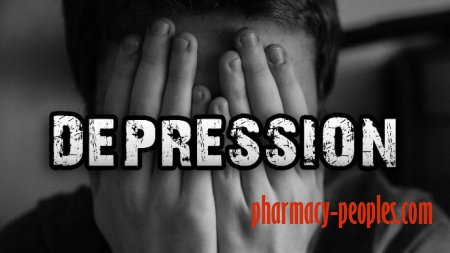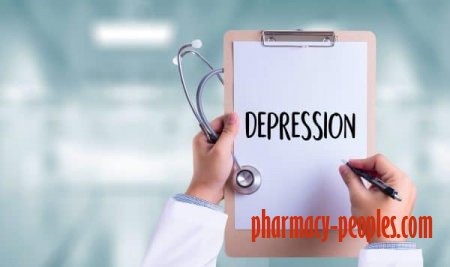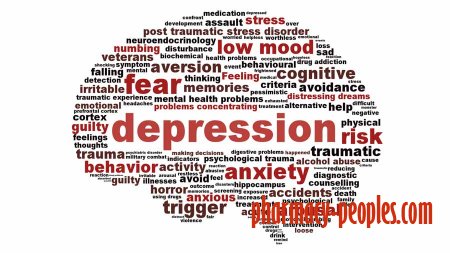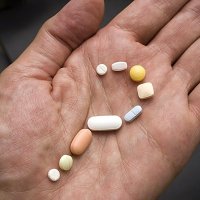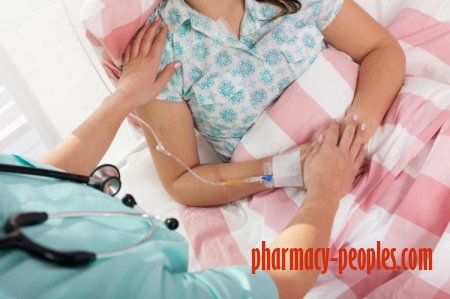Depression Signs, Symptoms, Latest Treatments, Tests, and More
Depression is one of the most common mental illnesses in the United States, affecting more than 16 million men and women (almost 6.7 percent of the adult population) and 3.1 million adolescents.
It is a serious mental illness in which feelings of sadness, hopelessness, loss of interest, anger, frustration, or other negative emotions like irritability (especially in adolescents) last for weeks or years and interfere with daily life.
All people experience moments when they feel sad or blue, but these feelings usually pass within a couple of days and are not indicative of depression.
Depression can cause deep emotional pain both to the person experiencing it and, often, to that person’s close family and friends.
Depression is a significant public-health issue. It is the leading cause of disability in the United States for people between ages 15 and 44 and is the number one cause of injury or illness for men and women around the world. People with depression are more likely to die from suicide as well as from other illnesses, such as heart disease.
What Is Depression?
There are several different types of medically recognized depression.
The most common type of depression is called major depression, and it occurs when symptoms interfere with the enjoyment of life or with daily functions — including work, sleep, and eating habits — for at least two weeks straight.
Some people experience only one episode of major depression in their life, while others may go through numerous recurrent episodes of the illness.
In comparison, people with a condition known as persistent depressive disorder — also known as dysthymia — experience a depressed mood that lasts continuously for at least two years.
A person with dysthymia may experience episodes of major depression as well as periods of less severe symptoms.
Other common types of depression include:
- Postpartum depression, in which mothers experience symptoms of major depression after giving birth. Mood impairment is much stronger, and lasts longer, than the “baby blues” — the relatively mild symptoms of depression and anxiety that many new mothers experience. Feelings of extreme sadness, anxiety, or exhaustion can make it difficult for the mother to bond with or care for her baby.
- Seasonal affective disorder (SAD), in which depression occurs in during winter, and sometimes fall, and is associated with a lack of sunlight. This depression is typically accompanied by social withdrawal, increased sleep, and weight gain.
- Major depression with psychotic features, in which severe depression accompanies loss of touch with reality, such as delusions (false fixed beliefs) and hallucinations (hearing and seeing things other people can’t). These psychotic features can focus on a kind of theme, such as illusions of illness or poverty.
- Premenstrual dysphoric disorder, in which symptoms of depression develop a week before a woman’s period and pass after menstruation.
Some people who experience depression may have bipolar disorder — formerly called manic depression — which is characterized by moods that cycle between extreme highs (mania) and lows (depression).
How Many People Experience Depression?
In the United States, depression is one of the most common mental health disorders. And it is becoming more prevalent, especially among adolescents.
In 2016, 16.2 million adults age 18 older — almost 6.7 percent of adults — had at least one major depressive episode. Additionally, 3.1 million adolescents — 19.4 percent of girls and 6.4 percent of boys — have experienced major depression. The increase in depression rates among adolescents has outpaced all other age groups.
Persistent depressive disorder affects about 1.5 percent of the adult population.
According to the NIH, women in the U.S. are significantly more likely to experience depression (8.5 percent) than men (4.8 percent).
Among adults, people between ages 18 and 25 are most at risk for depression (10.9 percent), whereas those older than 50 are at the lowest risk (4.8 percent).
When racial and ethnic factors are considered, adults who identify with two or more racial or ethnic groups show the highest rate of depression (10.5 percent).
Having one depressive episode increases your risk of having another later in life. According to a study in Psychological Medicine, more than 13 percent of people who recover from their first episode of major depression go on to have another episode within five years; 23 percent within 10 years; and 42 percent within 20 years.
Globally, depression affects more than 300 million people of all ages, according to the World Health Organization (WHO). That is the equivalent of 4.4 percent of the global population.
Depression is the leading cause of disability worldwide. Fewer than half those living with depression — and in some countries, fewer than 10 percent — receive the care they need. A number of factors prevent people from getting treatment, such as lack of trained health-care providers, social stigma, and misdiagnosis.
Different Cultures Experience Different Rates of Depression
For instance, the prevalence of depressive disorders appears to be low in Papua New Guinea (3 percent of the total population) and high in Ukraine (6.3 percent).
What Causes Depression?
There are numerous factors that can trigger the onset of depression, including bereavement, illness (such as cancer or chronic pain), social isolation or loneliness, and stressful life events (such as divorce or money difficulties). Depression can also occur spontaneously, without any obvious cause.
A person who experiences anxiety is at high risk for developing depression, and vice versa. Nearly half those who are diagnosed with anxiety are also diagnosed with depression.
Scientists don’t know exactly why some people develop depression and others avoid it. Several factors most likely contribute to the development of depression, including:
- Genetics (mood disorders and suicide run in families)
- Trauma or abuse at an early age, which can cause long-term changes in how the brain deals with fear and stress
- Brain structure and chemistry (imaging studies have shown that the frontal lobe becomes less active when a person is depressed)
- Substance abuse (approximately 30 percent of people who abuse drugs or alcohol also have depression, requiring a coordinated treatment approach)
- Other medical conditions (people with sleep disturbances, cancer, chronic pain, and attention deficit hyperactivity disorder —ADHD — are more likely to develop depression)
How Can You Tell if You Are Depressed?
Everyone has times when they feel sad, hopeless, frustrated, or worn out. But unless your life is dominated by negative feelings on most days, for most of the day, for weeks on end, you may not have depression.
Understanding all the complicated ways depression can manifest itself — in men, women, and, increasingly, teenagers — is the first step toward finding the right treatment for a mental illness that affects an estimated 300 million people around the world.
One reason depression is difficult to identify is that its symptoms can vary depending on age and sex. Adults with depression generally feel overwhelmed by sadness, while depression in adolescents tends to express itself mainly as irritability. Women with depression are more likely to note symptoms like anxiety and indecisiveness, while men are more likely to report anger and aggression.
If you think you may have depression, describe your symptoms to a doctor. Or, if you’re not able to do that, pull out your cell phone and type “depression” or “clinical depression” into Google; you’ll be able to take a clinically validated depression test, known as the PHQ-9 patient health questionnaire, immediately and see if your scores show that you have depression.
What Are the Treatment Options for Depression?
The vast majority of people with depression who seek treatment will find a cure, with success rates of about 80 or 90 percent. But getting there isn’t easy. Finding the right approach can take work, even as the options expand and become more targeted to each patient’s particular needs.
For people looking for medication-free help, there are more choices than ever — from acupuncture, meditation, and yoga to cognitive behavioral therapy, designed to replace harmful patterns in one’s thoughts with healthy ones.
Antidepressants remain a powerful tool, especially as researchers learn more about brain chemistry and develop new drugs that better correct neurological imbalances, with fewer side effects.
For the most intractable cases of depression, physicians may turn to brain-stimulation treatments like electroconvulsive therapy (ECT). ECT can provide fast relief with far fewer side effects than electroshock therapy did so infamously.
On the other end of the spectrum, researchers are exploring a salvage medication for people with suicidal depression: ketamine, a street drug that can induce hallucinations and out-of-body experiences but that can also provide astonishingly swift relief from depression. Ketamine is currently undergoing clinical trials; meanwhile, physicians warn that this drug can be abused.
Will Medication Work Against Depression?
When lifestyle changes or psychotherapy aren’t lifting the pall of depression, antidepressants typically come into play. An estimated 13 percent of Americans age 12 and up take antidepressants — a 65 percent increase from 1999 to 2014.
Understanding the main pharmaceutical options requires becoming familiar with a number of acronyms: SSRIs (selective serotonin reuptake inhibitors), SNRIs (serotonin and norepinephrine reuptake inhibitors), NDRIs (norepinephrine–dopamine reuptake inhibitors), TCAs (tricyclic antidepressants), and MAOIs (monoamine oxidase inhibitors). These represent categories of drugs, grouped together because of their effect on various neurotransmitters (chemical messengers) in the brain.
SSRIs (selective serotonin reuptake inhibitors) like Prozac (fluoxetine), Celexa (citalopram), and Zoloft (sertraline) are the most commonly prescribed antidepressants. They target serotonin, a neurotransmitter that helps control mood, appetite, and sleep. People with depression often have abnormally low levels of serotonin.
All antidepressants can have side effects, but some may be more problematic than others. Guided by your doctor, you may need to try several different drugs before you find the one that’s best for you. Keep in mind that they do not work immediately and usually take at least several weeks for maximal benefit. Combining the right medication with psychotherapy or another intervention, like a support group, might be what you need to feel better.
Depression During Pregnancy Is Not Uncommon
Postpartum depression — depression after giving birth — has been well documented, with women like Brooke Shields and Drew Barrymore opening up to the media about their experiences. But antenatal depression — depression during pregnancy — still goes largely undiscussed, even though anywhere from 5 to 25 percent of pregnant women experience it.
There are a number of potential reasons for this. Women may be reluctant to reveal negative feelings at a time in their lives when society, family, and friends all expect them to be joyful. Women who are poor or who became pregnant unintentionally may regard symptoms of depression as a realistic response to their situation. Plus, some of the signs of depression — fatigue, changes in eating habits, sleep disturbances —are similar to the changes that many women experience as a typical part of pregnancy, making it harder to spot depression.
Therapists and physicians generally attempt to treat antenatal depression with non-medication methods first, as there is evidence that antidepressants may pose a risk to fetuses. For women with severe antenatal depression, however, antidepressants may be essential. Women need to educate themselves and work with their physicians to balance the risks and the benefits to both themselves and their infants.
SAD: When Depression Comes With the Seasons
A type of mild to severe depression that typically sets in as the hours of daylight wane in the fall, seasonal affective disorder (SAD) afflicts as many as 6 percent of Americans. Women are particularly at risk, experiencing SAD four times more often than men, as are people who have a relative with depression. People who live far from the equator tend to experience SAD in greater numbers — 9 percent of Alaskans versus 1 percent of Floridians, according to the National Institute of Mental Health (NIMH).
The causes of SAD are unclear, says NIMH, but research suggests it may be due to seasonal fluctuations in levels of serotonin, a brain chemical that helps regulate mood, or to an overproduction of melatonin, the hormone that regulates sleep. Scientists also posit that people with SAD may produce too little vitamin D, which impacts serotonin activity.
For many people with SAD, simply waiting for spring to arrive is not an option. Light therapy, which generally involves sitting in front of a light box first thing in the morning, can help; so can cognitive behavior therapy, a type of psychotherapy. Physicians also prescribe antidepressants, usually an SSRI (selective serotonin reuptake inhibitor), a category of drug that includes Prozac and Zoloft, or Wellbutrin (bupropion). Combining a number of different approaches under the oversight of a physician may be your smartest move.
A Variety of Depression Help Is Available
An enormous amount of help is available for people who have depression or who have a child, parent, spouse, or friend living with this mental illness.
Websites run by organizations like the National Institute of Mental Health (NIMH) provide copious background information as well as updates on clinical trials. Grassroots groups like the National Alliance on Mental Illness connect you with support and services, offer education, and let you know that you are not alone. Personal blogs share the struggle and the wisdom of lived experience. And numerous online depression tests can help those who aren’t sure whether or not they need help get started on the pathway to a healthier life.
- Health / Disease
- 13-03-2018, 23:04
- 1 514
- Pharmatic

